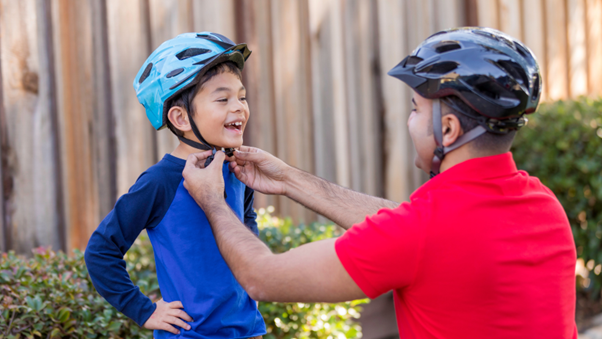
April is Sports Safety Month. It’s a great time to remind athletes and coaches of the importance of taking precautions against injury, illness, and other dangers during physical activities. Whether you’re involved in team sports or individual training, it’s essential to be aware of your surroundings and adequately warm up before engaging in any strenuous activity. Warming up helps increase flexibility and reduce the risk of injury.
Warm Up For Kids
A dynamic warm-up comprises stretching across a range of motion as opposed to static stretching, which entails maintaining a posture for 30 seconds or more to lengthen the muscle. Your breathing and heart rate must gradually increase as your body warms up. By doing this, you are lubricating your joints, improving the suppleness of your tendons and ligaments and your range of motion. Do activities for 20 to 30 seconds, such as jumping jacks, arm circles, lunges, squats, etc. (Bekkala)
Proper Hydration
Children aged 1-3 years old require around 4 cups of liquids per day, including water or milk, to be hydrated. For older children, this rises to about 5 cups for children aged 4 to 8 and 7-8 cups. It should be noted that these quantities differ from person to person and could need to be changed based on activity levels and outside factors like heat and humidity. Your youngster might require more water to stay hydrated when participating in sports or other activities. Ensure your child drinks water before, during, and after practice or games when participating in sports. Children between the ages of 9 and 12 should typically drink 3 to 8 ounces of water every 20 minutes when engaging in severe exercise or perspiring to keep hydrated. Teenagers should consume 34 to 50 ounces of fluid every hour.
Staying hydrated in the days and hours before activities start is advantageous. Even while playing in the park might not be as intense, if your child is perspiring, ensure they are getting enough fluid replacement. Electrolyte-supplemented beverages could be recommended if your child is sweating a lot or if severe exercise lasts more than an hour per day.
(HealthyChildren.org)
Helmet and Eye Protection
Injuries can be avoided by wearing the proper gear when engaging in sports and other activities. Helmets are a good place to start because they are essential for various sports and activities, including football, hockey, baseball, softball, bicycling, lacrosse, horseback riding, skateboarding, inline skating, skiing, and snowboarding, to mention a few. 75%–85% fewer head injuries occur when a helmet is used. Several sports also call for the use of eye protection. Teens participating in sports are more likely to sustain eye injuries, although the chance of a significant eye injury can be 90% lower with adequately fitted protective eyewear. Your mouth, teeth, and tongue can be protected with mouthguards. Armor is also essential, including elbow, wrist, and knee protectors. (KidsHealth)
Safe Kids – It’s Up to Parents and Coaches
April is an excellent time to remind everyone of the importance of safety when engaging in sports or other physical activities. Parents and coaches must help educate athletes on how to warm up properly, stay hydrated, and wear protective gear to reduce their risk of injury. These measures will ensure that athletes can enjoy playing or working out without the worry of incurring damage.
Rice Emergency Room is here when sports injuries happen. We have onsite radiology and labs to get your child seen and diagnosed quickly. You won’t spend hours in our waiting room waiting to be seen. We have a pediatric suite to help your child remain calm in cheerful surroundings. Check in online and let us know you’re on your way!
Works Cited
Bekkala, Angela. “10 Dynamic Warm up Exercises for Youth Athletes.” ACTIVEkids, Active.com, 19 May 2017, www.activekids.com/soccer/articles/10-dynamic-warm-up-exercises-for-youth-athletes/slide-10.
“Choose Water for Healthy Hydration.” HealthyChildren.org, www.healthychildren.org/English/healthy-living/nutrition/Pages/Choose-Water-for-Healthy-Hydration.aspx#:~:text=To%20stay%20well%20hydrated%2C%20children,8%20cups%20for%20older%20children.
“Sports and Exercise Safety (for Teens) – Nemours Kidshealth.” Edited by Cassidy Foley Davelaar, KidsHealth, The Nemours Foundation, Aug. 2020, kidshealth.org/en/teens/sport-safety.html.



